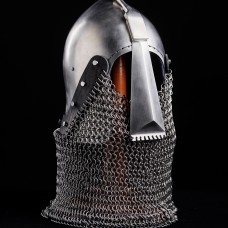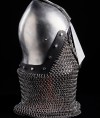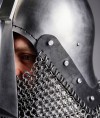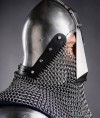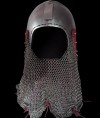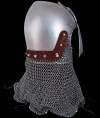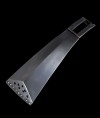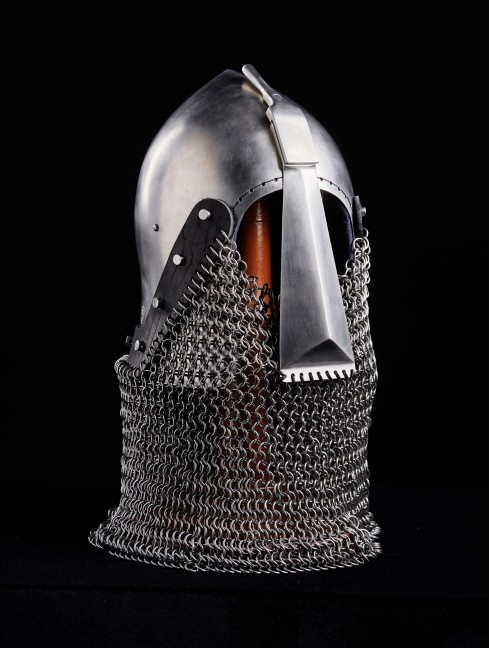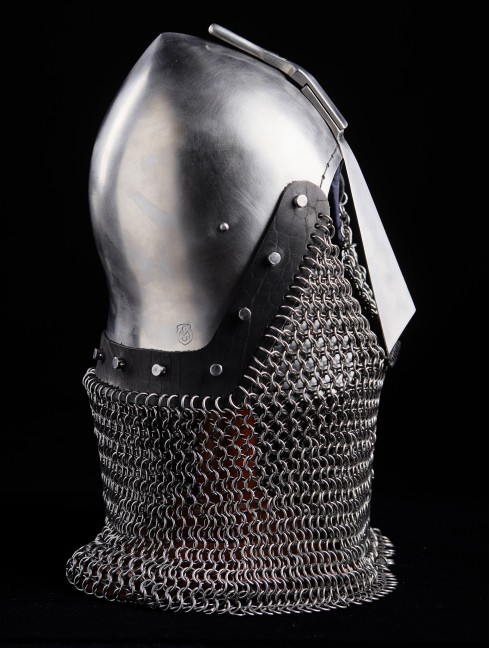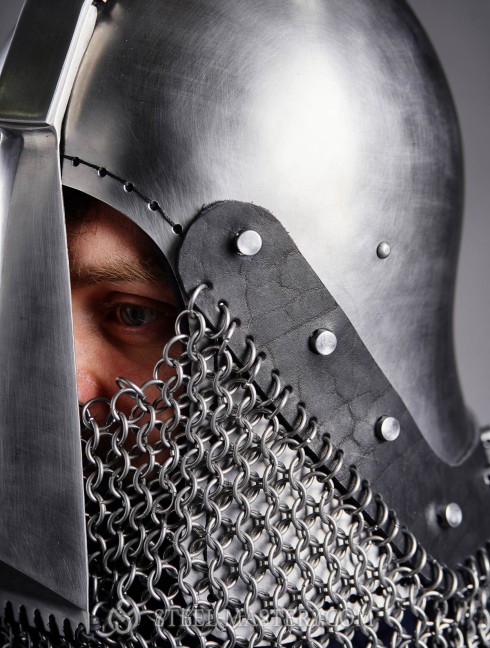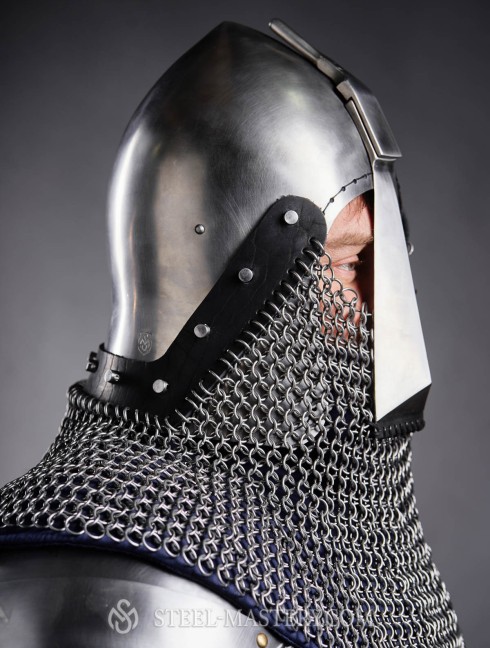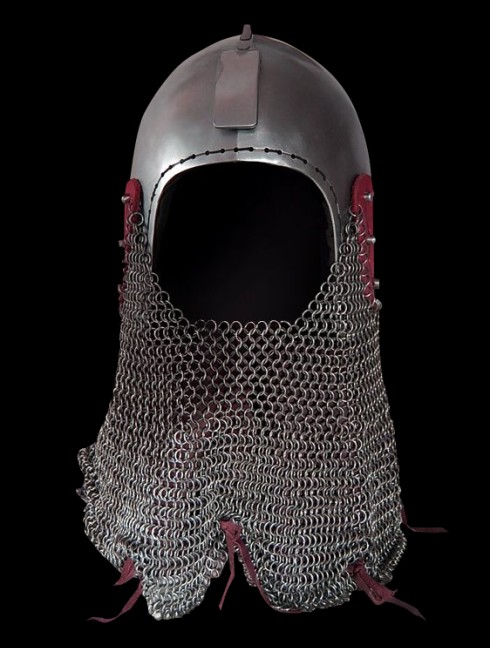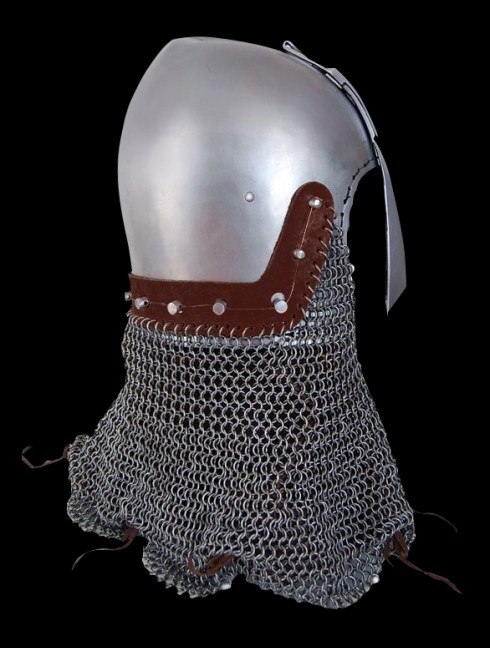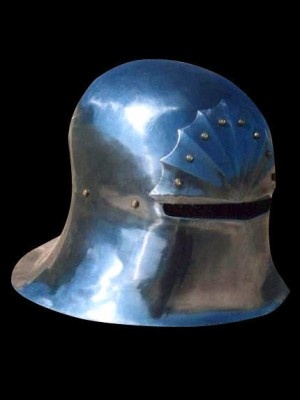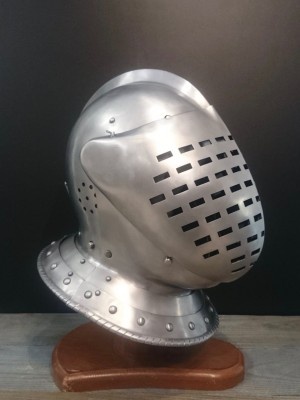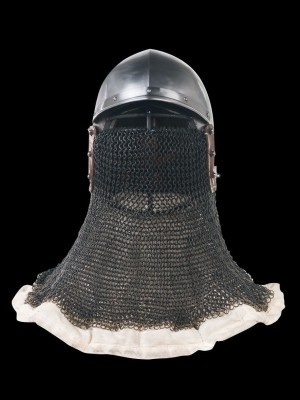Helmet bascinet mid-14th century
AH-10-03
Total
€580
Los costes de envío se agregarán al precio del pedido después de añadirlo al carrito y especificar su ubicación. El precio de entrega depende de la región y del artículo pedido.
Helmet bascinet mid-14th century
Personalización
Este artículo es personalizado, lo que significa que nuestros artesanos usan medidas corporales individuales de un cliente para su fabricación. Este tipo de fabricación proporciona un ajuste perfecto de un artículo.
Descripción
Bacinet was a very popular form of helmet dome in the XIV century and often complemented by aventail.
In turn, the nasal plate was a narrow metal plate designed, as you can easily guess, to protect the nose. Helmets with nasal plates were very common in Rus and Western Asia, but in Europe they were superseded by helmets with visors in the XIII-XIV centuries.
Nasal plates were designed to protect the face from not very strong blows, but unlike other means of facial protection, hardly impaired visibility and did not interfere with breathing.
We offer you a helmet with nasal plates of a detachable type (you can read about them here - Helmet's visor fixation types). Such a nasal plate has a hinge which allows it to be folded upwards and it is mounted on a special holder, which allows it to unfast the nasal plate. This is quite a specific type of nasal plate, characteristic only for Western and Central Europe and it was found mainly with bacinets, rarely occurring with cervelliere. Both were designed to be worn under a pot helmet (topfhelm). If desired to improve visibility, the pot helmet was discarded and the knight remained in the bacinet or cervelliere.
A similar nasal plate design was versatile both for helmets where the nasal plate was fixed with the aventail and those where it was not. In the first case you could detach the nasal plate, so that it hangs on the aventail, and in the second case you could flip that nasal plate up.
With the appearance of the visor (you can read about them here - Visors of bascinet: from primitive to grotesque), the klappvisier (originally it looked like a shovel, but later it was pointed - hundsgugel) was mounted on the same fixture. The same helmet could be used with both nasal plate and visor. Usually the visor was fastened for battle, and nasal plate for the tournament, because the tournament traditionally continued to wear not a bacinet with a visor, but an ornate and dignified pot helmet, decorated with heraldic figures, under which was worn a bacinet with nasal plate. It is noteworthy that the word visier originally did not refer to the visor, but to the hinged nasal plate, while the visor (klappvisier) was considered a variation of the nasal plate. With the disappearance of pot helmets disappeared bacinets with such nasal plates, and the word visier began to mean only visor.
Main photo shows authentic battle helm with following options:
- Cold-rolled steel 1.5 mm;
- Satin polishing as finish treatment;
- Black leather for aventail;
- Steel vervelles for aventail;
- Mail aventail;
- Sewn liner
- No decoration
Base price includes following options:
- Cold-rolled steel 1.5 mm;
- Satin polishing;
- Black leather belts;
- Steel nickel-plated buckles;
- Steel rivets;
- Sewn liner;
- No aventail
- No decoration
In options, you may choose another type and thickness of metal, color of belts, finish treatment and decoration.
Benefits, which you’ll get, if you buy medieval helmet at Steel Mastery:
- Custom-made high-quality metal body armor, handcrafted by your individual parameters;
- Reliability and comfortable wearing for years;
- Product made by experienced blacksmiths, who really know how to make a good armor;
- Convenient payment systems (Paypal, Skrill, Visa, MasterCard, American Express);
- Flexible return system in case if you don’t like an item.
You may also like these models of the XIV century bascinets: bascinet with side hinged visor, bascinet helmet without a visor.
In section “Helmets”, you can see all models that we offer for ordering. If you didn’t find any for your taste and wish, please send us photo and description of the required model and we will make it for you.
Si no le gusta el producto recibido por cualquier razón, ustede puede mandárnoslo en los primeros 14 días. Si el artículo recibido tiene defectos o no se ajusta a sus parámetros, le haremos un artículo nuevo y se lo mandaremos a nuestro coste. Si el servicio postal pierde su paquete, haremosuna búsqueda de éste. Si el paquete no puede ser encontrado, haremos un nuevo artículo a cuenta nuestra.
Enviamos pedidos a través del Servicio Postal Nacional, que lleva el pedido a su oficina de correos local. Tras el envío, le proporcionaremos el número de seguimiento del paquete. Si necesita entrega urgente (DHL, TNT, etc.), por favor, contáctenos.
Cada producto es artesano y requiere tiempo para su fabricación. Tiempo estimado:
- Gambesón y armadura acolchada - 8-9 semanas
- Trajes y otras vestimentas - 4-6 semanas
- Brigantina - 3-4 meses
- Accesorios de cuero 2-4 semanas
- Armadura de metal - 2-5 months

